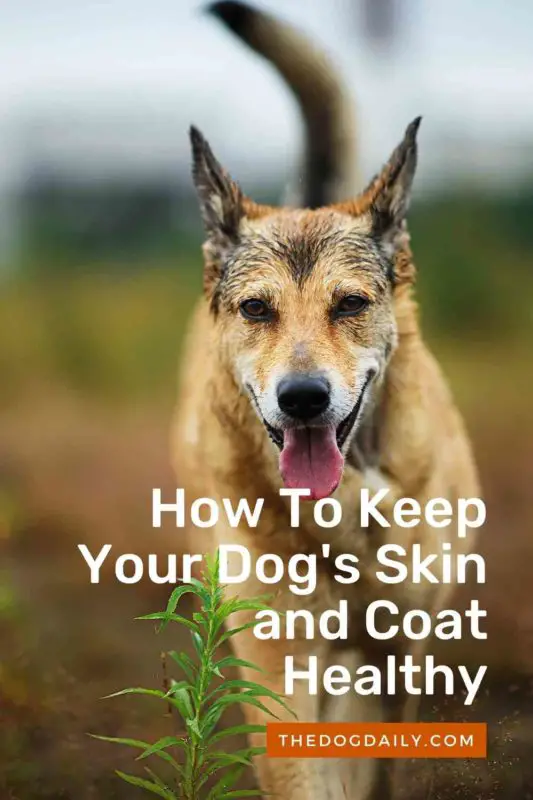How Do I Keep My Dog’s Skin and Coat Healthy?
It’s easy to spot a healthy-looking dog: a gleam in the eye, a bounce in the step, and a glossy, healthy coat. That glow reflects a dog’s overall health and a good gauge of what’s going on inside and out. Several factors play roles in your dog’s skin and coat health. They are:
- Heredity
- Nutrition
- Internal or external parasites
- Health
- Grooming
Although heredity determines the thickness, length, color, and texture of a dog’s coat, your care can make a big difference in your pet’s skin and coat health.
Regular veterinary checkups will help ensure that your dog is disease and parasite-free. Flea-bite allergy and external parasites, such as mange, are primary causes of hair loss and skin problems.
Balanced Nutrition for a Better Coat
What’s the best thing you can do for your dog’s skin and coat health? Feed a high-quality food packed with protein. Dogs are carnivores — they need protein and thrive on diets rich in animal-based protein sources.
Hair is 95% protein! Although coat growth varies from dog to dog, all the hair’s combined growth can add up to 100 feet per day in some dogs. This means that nearly 30% of the animal’s daily protein requirement is used just for coat growth during some seasons.
If your dog’s skin seems thick or scaly, lacks elasticity, and you see hair loss, these may be signs of a nutritional deficiency. Check with your veterinarian.
Quality pet foods are carefully formulated to be complete and balanced, which means the food includes all the nutrients your pet needs. Ingredients are highly digestible, so your dog’s body uses the nutrients efficiently.
Dietary Fats Give That Glow
Studies have found that certain fatty acids play a critical role in canine skin and coat health. For some time, veterinarians and scientists have known omega-6 and omega-3 fatty acids are essential for achieving and maintaining a full, glossy coat.
Recent research has shown a precise balance of omega-6, and omega-3 fatty acids are essential. Supplying a dietary fatty acid balance (or ratio) of between five and ten omega-6 fatty acids to every one omega-3 fatty acid can be crucial to a healthy skin and coat.
Fatty Acids and Skin Health
Fatty acid supplements of omega-3s or adding fat, such as corn oil or bacon grease, to the pet’s diet rarely make for a healthy skin and coat. The best way to provide the precise balance necessary is through a complete diet.
A diet with an adequately adjusted fatty acid balance may also be helpful for skin health. The ratio of omega-6 fatty acids to omega-3 fatty acids should be between 5:1 and 10:1.
Ingredients that are rich in omega-6 include safflower oil, corn oil, poultry fat.
Ingredients that are rich in omega-3 include fish oil or meal, flax, and canola oil.
It will usually take between 6 and 8 weeks after a diet change to see skin and coat health results.
Working on the “Outer Dog”
The overall health of your “inner dog” helps create a beautiful, healthy coat, but the care of the “outer dog” is essential, too.
Regular grooming removes loose hair, dirt, and mats and distributes skin oils. Grooming lets you check your pet closely, catching any skin problems early. Plus, your dog will love the attention!
Here are some essential tools for grooming: brush, flea comb, nail clippers, and mild dog shampoo.
As dogs age, their skin may become more sensitive. Select a mild canine shampoo for a senior dog. Shampoos made from coconut or palm oils are the mildest. Unusual or “doggy” odors can signal disease, so if odors persist, contact your veterinarian. Do not use human shampoos since they can be too harsh for a dog’s skin.
When bathing your dog, be sure to rinse thoroughly. Any residue left on the skin can be irritating. You may want to follow the shampoo with a hair conditioner to control static electricity and add extra body or sheen.
During the summer, pay close attention to your dog’s skin and coat. Many dogs shed a winter coat, and others face flea problems, so it’s an excellent time to evaluate your dog’s skin and coat condition to nip any issues in the bud.
Attention to your dog’s coat and skin from the inside out will produce a healthy, lively dog that is a joy to look at and a pleasure to live with every day!
Article written by Author: Amanda Harrison

